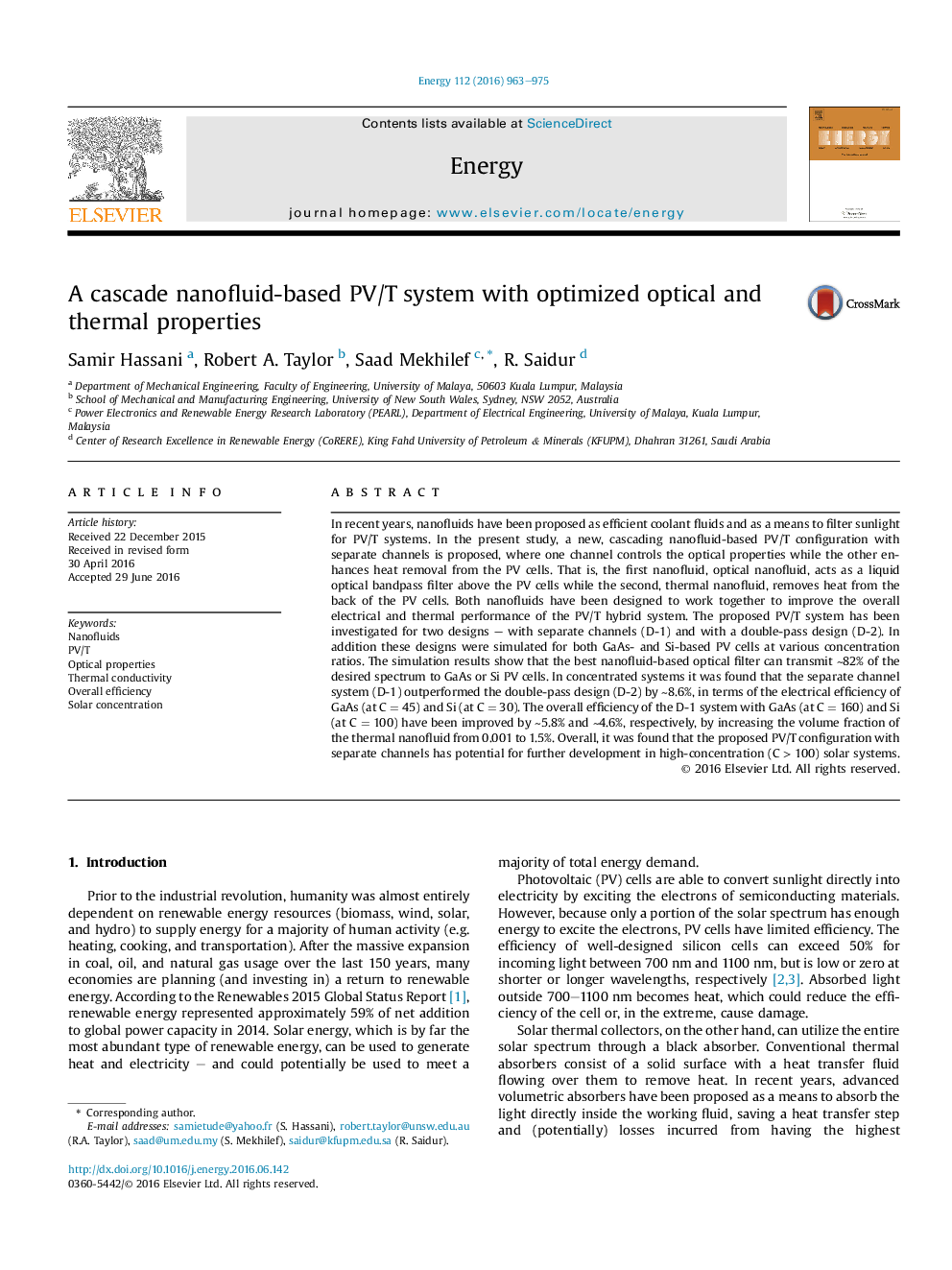| Article ID | Journal | Published Year | Pages | File Type |
|---|---|---|---|---|
| 8073137 | Energy | 2016 | 13 Pages |
Abstract
In recent years, nanofluids have been proposed as efficient coolant fluids and as a means to filter sunlight for PV/T systems. In the present study, a new, cascading nanofluid-based PV/T configuration with separate channels is proposed, where one channel controls the optical properties while the other enhances heat removal from the PV cells. That is, the first nanofluid, optical nanofluid, acts as a liquid optical bandpass filter above the PV cells while the second, thermal nanofluid, removes heat from the back of the PV cells. Both nanofluids have been designed to work together to improve the overall electrical and thermal performance of the PV/T hybrid system. The proposed PV/T system has been investigated for two designs - with separate channels (D-1) and with a double-pass design (D-2). In addition these designs were simulated for both GaAs- and Si-based PV cells at various concentration ratios. The simulation results show that the best nanofluid-based optical filter can transmit â¼82% of the desired spectrum to GaAs or Si PV cells. In concentrated systems it was found that the separate channel system (D-1) outperformed the double-pass design (D-2) by â¼8.6%, in terms of the electrical efficiency of GaAs (at CÂ =Â 45) and Si (at CÂ =Â 30). The overall efficiency of the D-1 system with GaAs (at CÂ =Â 160) and Si (at CÂ =Â 100) have been improved by â¼5.8% and â¼4.6%, respectively, by increasing the volume fraction of the thermal nanofluid from 0.001 to 1.5%. Overall, it was found that the proposed PV/T configuration with separate channels has potential for further development in high-concentration (CÂ >Â 100) solar systems.
Related Topics
Physical Sciences and Engineering
Energy
Energy (General)
Authors
Samir Hassani, Robert A. Taylor, Saad Mekhilef, R. Saidur,
